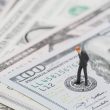by Eric Winograd, Fixed Income, AllianceBernstein
The Fed left its benchmark rate unchanged this week, but also signaled a very high probability of cuts later this year. Historically, rate cuts have been a sign of trouble—typically made in response to slower growth and rising unemployment. But this time around, growth data aren’t showing much weakness. What’s the story?
We see the Fed’s proactiveness as a welcome and meaningful change in the way it reacts to incoming data. Historically, the Fed has waited for clear evidence that the economy was struggling before cutting rates. More often than not, that left it racing to bail out an economy already in distress—rather than nipping economic trouble in the bud. By moving earlier this time, the Fed hopes to avoid a rerun. An ounce of prevention is worth a pound of cure, and that’s what the Fed appears to be betting on by opening the door to rate cuts later this summer.
Memories of the Great Recession Linger
What has prompted the Fed to change its playbook this cycle? It’s the scar tissue from the last cycle. Back then, central bankers around the world cut rates to zero or even lower during the Great Recession and still had to resort to quantitative easing (QE), yield-curve control and other unconventional policy tools to stave off a depression. It worked, but only barely. There’s widespread recognition today among policymakers that unconventional tools weren’t as efficient as hoped: it took a lot of QE just to avoid a depression.
The US policy rate today ranges from 2.25% to 2.50%, roughly half of its starting level just before the last recession. That makes it all but certain that another recession would force the Fed to cut to the zero bound again—and revisit unconventional tools. We don’t doubt that the Fed would take these steps if necessary, but we’re sure they would prefer not to. Better to cut rates now and hopefully prevent a recession than to wait and be forced to react to one.
Being preemptive doesn’t come without risks. Move too quickly on rates and it could provide too much fuel to the economy, triggering an overheating or financial market bubbles. But inflation is still well below the Fed’s target, so overheating risk seems minimal at best—we don’t believe that this concern will hold the Fed back.
A Move to Avoid Falling Behind the Economic Curve
Financial market bubbles are a more immediate concern, but the Fed believes that better regulation and enhanced capital requirements have made banks safer. Banks, of course, were the channel through which the last crisis spread from financial markets to the real economy. Time will tell whether the Fed’s confidence in its regulatory structure is well placed or not, but in the near term we think it will allow them to risk inflating market bubbles in order to avoid falling behind the economic curve.
How will all of this play out? We think the Fed will cut rates at least twice this year, starting in July, to keep the economy from weakening. If these cuts work, the interest-rate cut cycle should be brief and shallow: in our view, 75 to 100 basis points over six to nine months. If the cuts don’t work, get ready for rates to fall further—and for QE and other unconventional policy tools to be back on the agenda.
Eric Winograd is a Senior Economist at AB
This post was first published at the AllianceBernstein blog
Copyright © AllianceBernstein
















